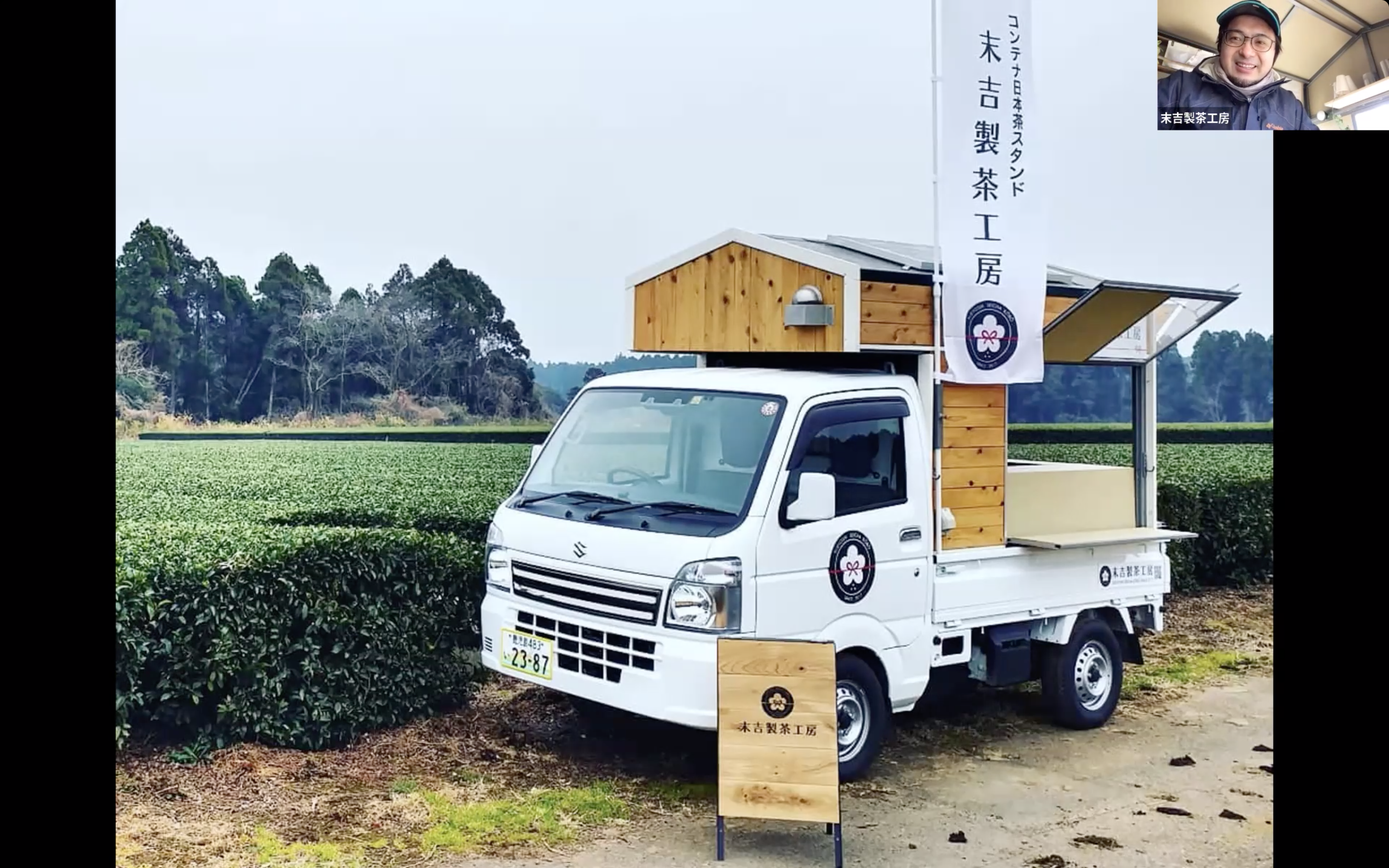In January we started again our Meet the Tea Farmer events! The guest this time was Tatefumi Mataki, a young tea farmer from Soo, Kagoshima. Mataki-san is a third generation tea farmer that used to work as an accountant but 6 years ago decided to quit and work full time in his family tea company: Sueyoshi Seicha Kobo. He has a strong passion for tea and he mainly produces kabusecha (shaded sencha). During the event, we tried one of his best kabusecha and a very light roasted hojicha from sencha leaves.
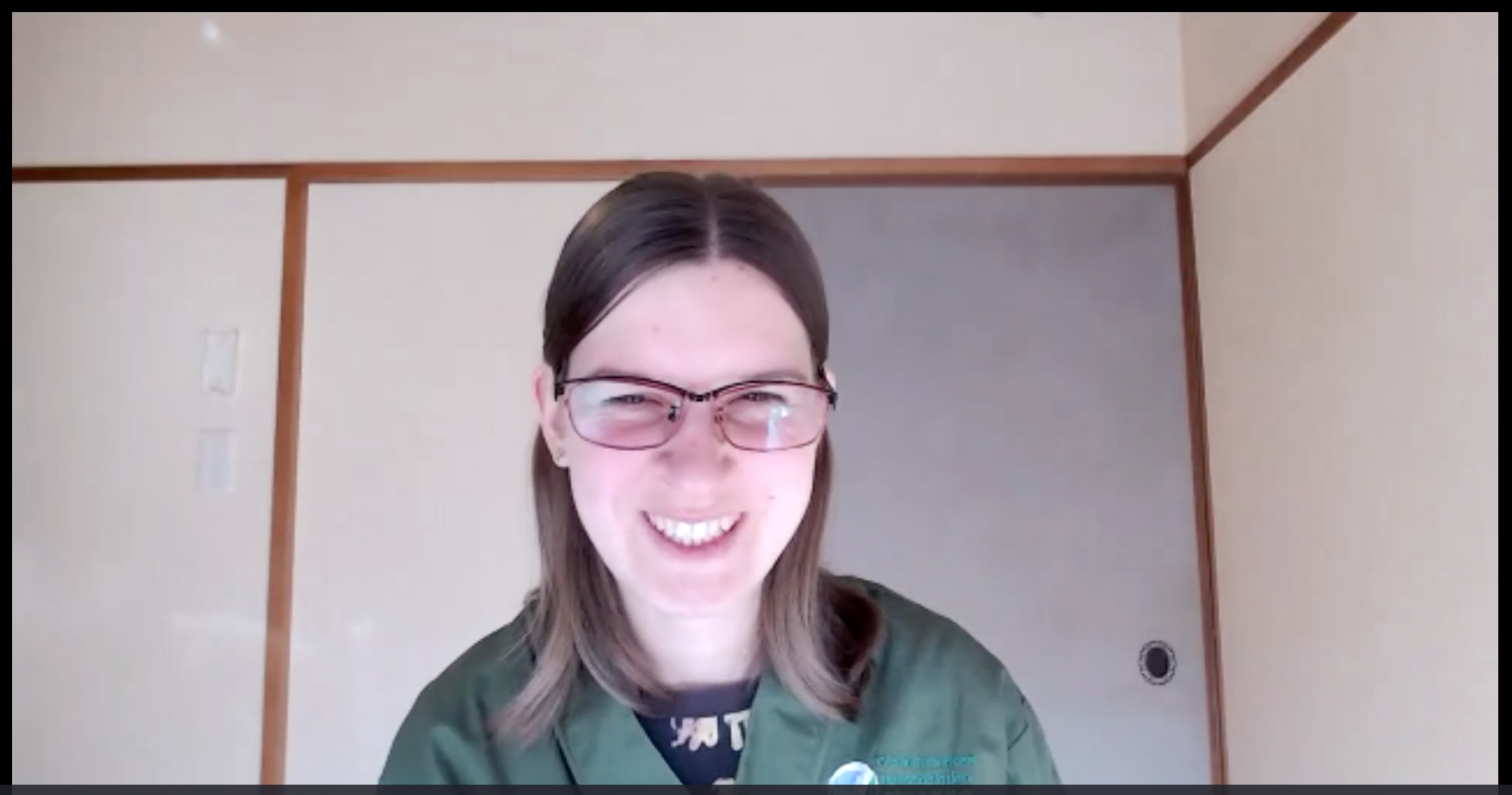
But let’s see how was the first tea of the day. A kabusecha of saemidori cultivar, shaded for about two weeks and harvested at the end of April. Mataki-san recommends to brew 3 grams of this tea with 80ml of water at 80ºC for 60 seconds. He elegantly pours the tea little by little, swinging the kyusu. The colour looks amazing, so green! Mataki-san explained us that this is the main feature of kabusecha. And that saemidori cultivar is naturally less bitter and less astringent and also has a beautiful green colour. The participants found this tea to be sweet and with an elegant umami, not overwhelming, very nice. Mataki-san told us that this is probably the most balanced tea that he makes. It has even received a few awards!
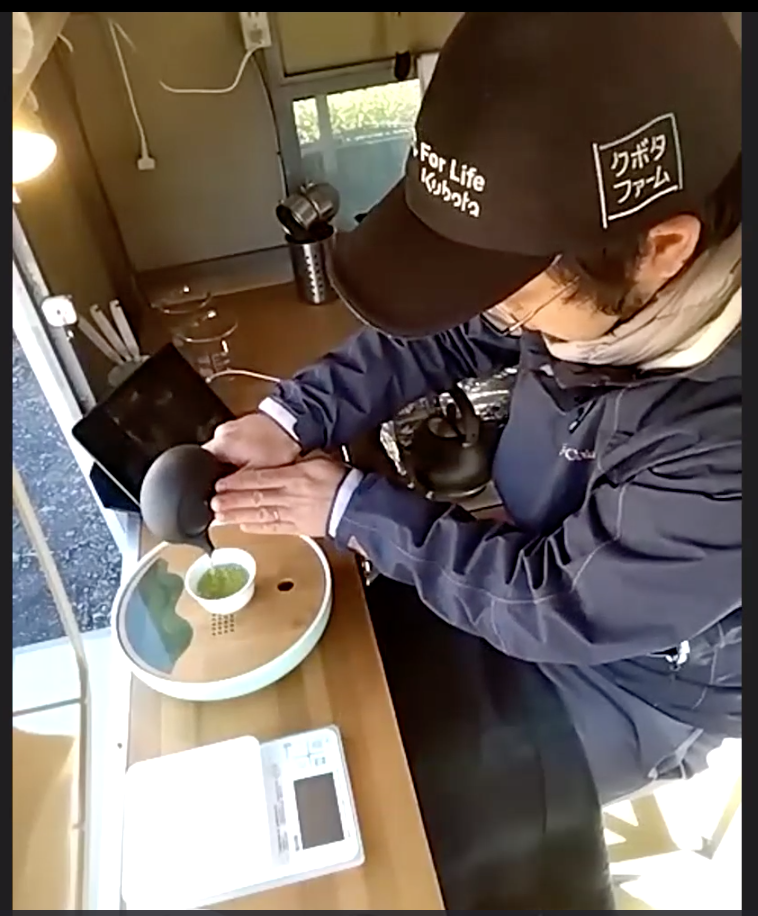
One interesting question to the tea farmer was: what makes the most impact on this tea during its cultivation and process? Mataki-san replied that probably the most important thing is the work in the farm. He thinks that 70% of this tea is made up by the work in the farm, 20% by the steaming and then all the rest. The day was very cold out there in Soo, that it demanded a second brew! This time at 90ºC for 30 seconds. In the meanwhile, we talked a bit about Kagoshima.
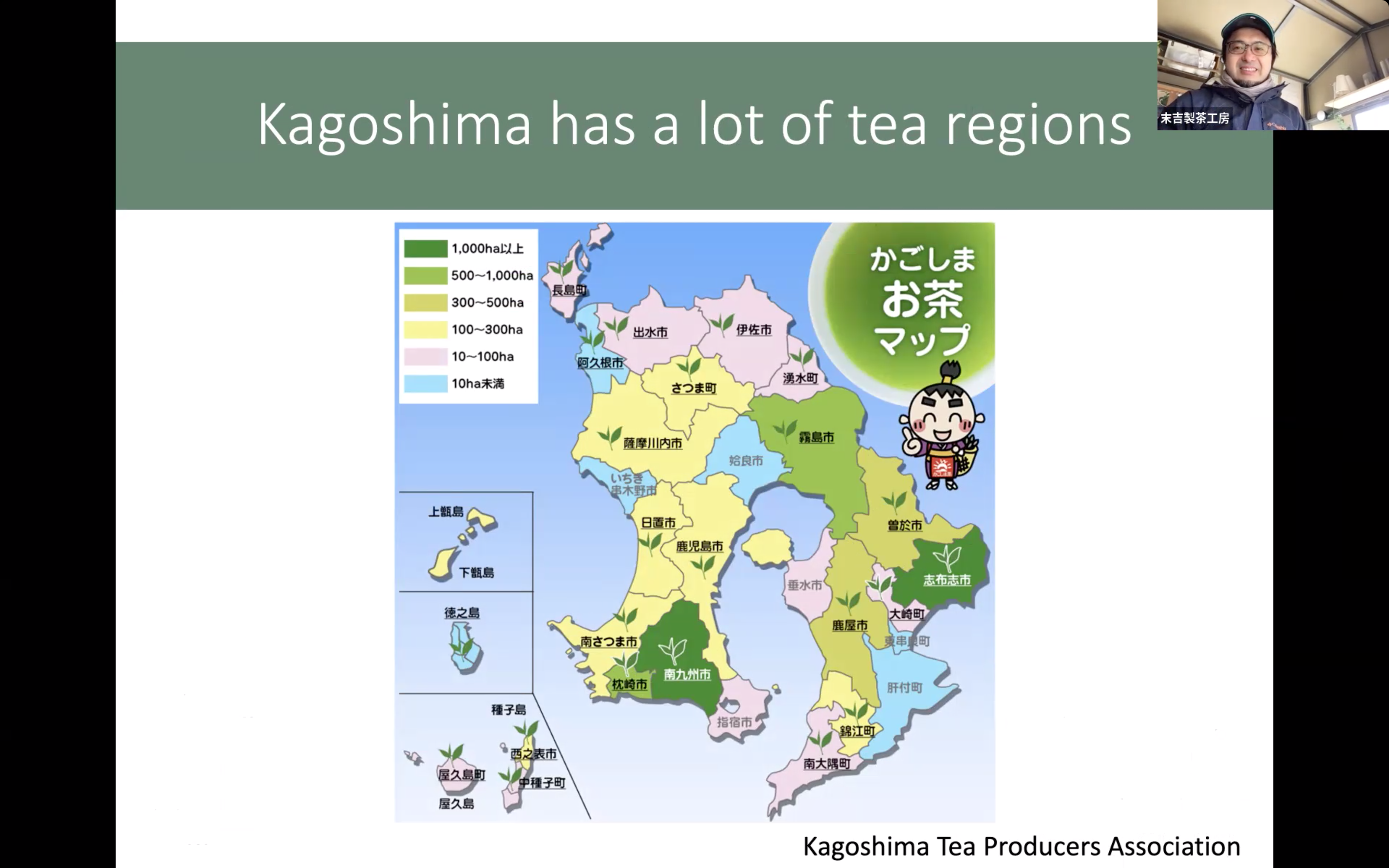
Mataki-san explained that the volcanos in Kagoshima erupt quite a lot and have an effect also on tea. The ashes fall on tea leaves, so the leaves need to be washed before processing. Then we talked a bit more about Sueyoshi Seicha Kobo. The tea farm was started by Mataki-san’s grandfather. At the time, a neighbour decided to stop making tea. The grandfather bought those fields and the factory altogether and started with tea making. Some of the yabukita cultivar plants they have today, are still from that time and are around 70 years old: of the first yabukita that were planted in Kagoshima!

Additionally, Mataki-san has received many awards, in Japan and abroad. Already his father started to listen more to customers and improve their teas. But it was Mataki-san who started submitting the teas at contests. His teas have been very successful both in Japan than abroad!
The second tea we tasted was a peculiar hojicha. The leaves used are from sencha and the roasting is quite light. The aroma is rich but the taste is very fresh and green: it still keeps some qualities from sencha, so it is an interesting tea. The suggested brewing parameters this time were of 3 grams of tea with 80ml of water at 80ºC for 40 seconds.

This tea is very interesting and the aroma really pleasant. The participants loved it! We couldn’t avoid asking how this tea was created. Mataki-san told us the whole story: the beginning of this tea was actually a mistake. His father tried to do hojicha himself without previous experience, using a firing machine. But he took it out as soon as he saw smoke coming out: he thought he burnt the tea. Instead, it was only slightly roasted – and the result was really nice! Now many people like this tea and Mataki-san is happy about it because something that might have felt like a failure, it became a success and liked by many people.
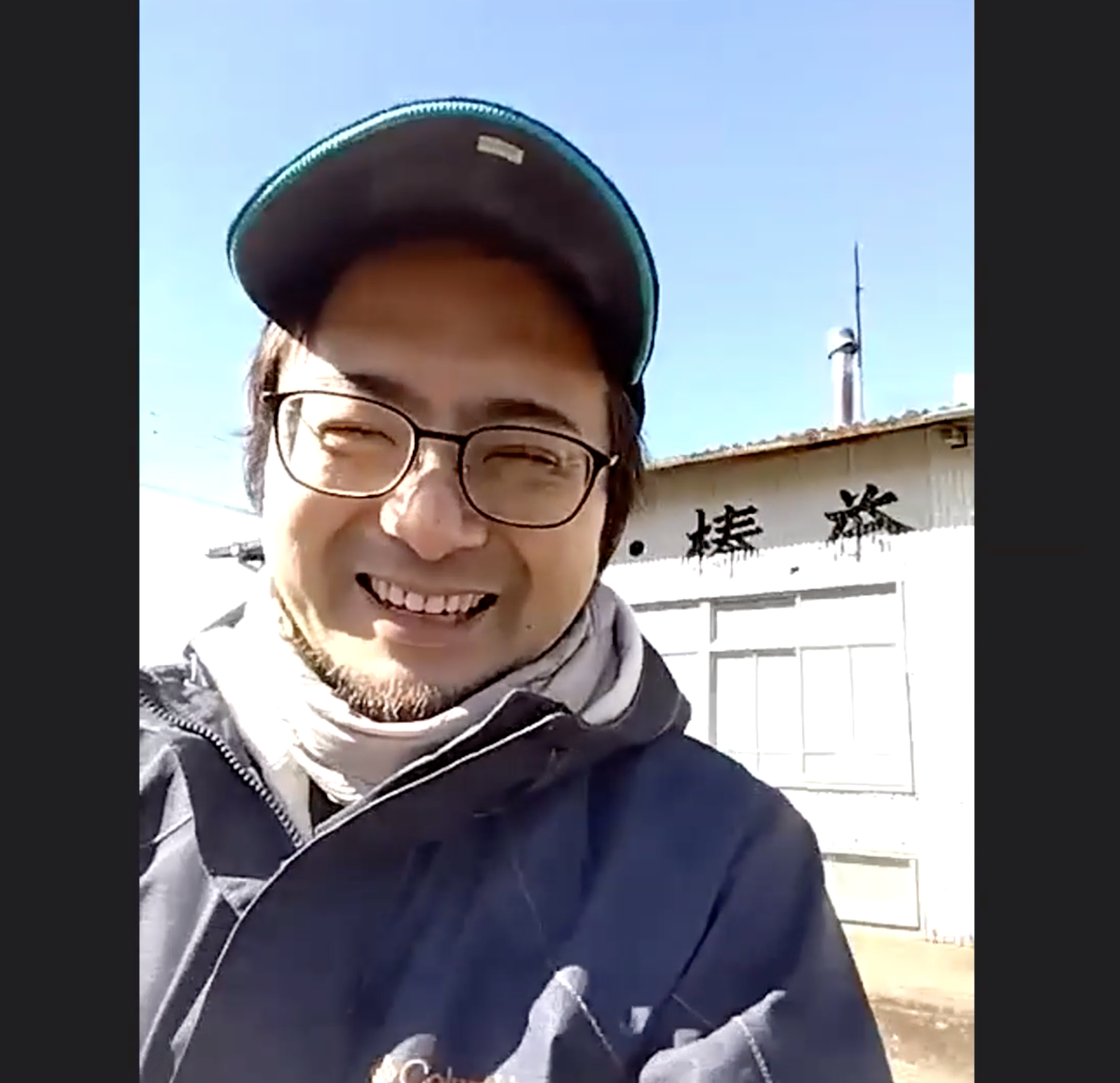
A last message from Mataki-san after this cheerful and interesting event: “Thank you, really, for joining today. I really appreciate that you made time to spend with me. It is a joy for tea producers when someone drinks and enjoy the tea. From here on I want to continue making good tea.”
And we would love to continue drinking your teas! Thank you so much for all the passion!

